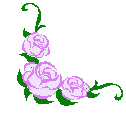The Shema‘
– the First Testament declaration of faith (3)
André H. Roosma
25 February 2012
(Dutch version: 3 Feb. 2012)
Today I want to pay attention to a third important word from the start of
the Shema‘ in Deuteronomy 6; the declaration of
faith of Israel.
That is the last word from verse 4:אֶחָד - ’echad -
one.
What does it mean that YaHUaH,
Israel’s God, is One?
Let us look again at the old root of the word ’echad, as it
was written in the days of Moses.1 The old basis of this word is
actually wachad, and was written as follows (read
from right to left):    . The symbols of it represent: . The symbols of it represent:
 : tent pin; symbol of connecting; : tent pin; symbol of connecting;  : tent panel/ wall / divider; also: flesh; : tent panel/ wall / divider; also: flesh;  : door, movement, to
enter. Wachad symbolizes the pin on the doorpost on which the door
hinges, connecting the moving door with the wall, and so with the rest of the
house. That pin allows the door the necessary freedom of movement, while
keeping everything together, day in, day out, year in, year out, as long as
the house exists. : door, movement, to
enter. Wachad symbolizes the pin on the doorpost on which the door
hinges, connecting the moving door with the wall, and so with the rest of the
house. That pin allows the door the necessary freedom of movement, while
keeping everything together, day in, day out, year in, year out, as long as
the house exists.
In the Bible we also find explicitly something about a pin and a doorpost.
That is in Exodus 21: 2-6. A slave who was set free but yet wanted to stay
with the family (the house) of his master, could
swear him his loyalty forever by having himself be nailed by his ear
‘with a pin (an awl) on the doorpost’.
That meant that he would be loyal forever, one with the house /
the family whom he served. In Akkadian of those days the word for
‘slave’ was even:    - warad - ‘pin
on the (higher) other’s door’. - warad - ‘pin
on the (higher) other’s door’.
So, the ‘pin on the doorpost’ symbolizes also unchanging
faithfulness and ‘to stay/remain together with’. This is indeed
characteristic for YaHUaH, the God of Israel. He
does not change. He is there – you can rely on that! He allows some
freedom of movement to parts of His house, while yet keeping everyone
faithfully together. Now that is ultimate belonging for us as His children!
It reminds me of what Jesus prayed (John 17: 11,
20-23):
“And now I am no more in the world, but they
are in the world, and I am coming to Thee. Holy Father, keep them in Thy Name, which Thou hast given me, that they may be one, even as We are
One. ... I do not pray for these only, but also for those who believe
in Me through their word, that they may all be one; even as Thou, Father, art in Me, and I in Thee, that they also may be in
Us, so that the world may believe that Thou hast sent me. The glory which
Thou hast given me I have given to them, that they may
be one even as We are One, I in them and
Thou in me, that they may become perfectly one,
so that the world may know that Thou hast sent me and hast loved them even
as Thou hast loved Me.
Hallelu YaH !
See also:
Malachi 2: 10;
Zakhar-Yahu (Zachariah) 14: 9; Deuteronomy 4: 39;
7: 9; 2 Kings 18: 1-17; 2 Chronicles 6: 14; Psalm 40: 12; Ephesians 4: 3-6.
André H. Roosma, ‘God is één
!  (God is One, in Dutch), Accede! web document, May 1993 (with appendix added in
2011). (God is One, in Dutch), Accede! web document, May 1993 (with appendix added in
2011).
This is a sequel to: The Shema‘ – the First Testament declaration of faith (1), and
Part (2).
Next article: Part (4).
|





